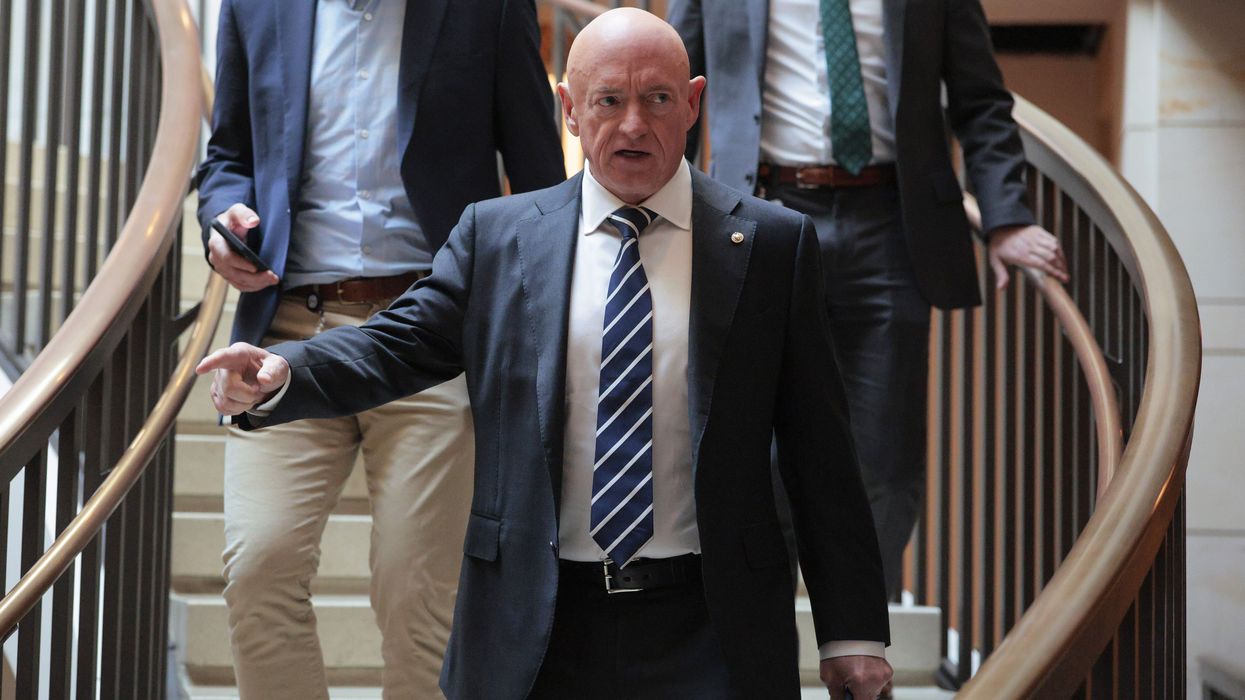“For a country whose interests are as numerous and diverse as ours, rigid adherence to non-interventionism is not possible,” the strategy notes.
The Trump administration tries to distinguish itself from previous administrations by criticizing foreign policy elites for seeking “permanent American domination of the entire world,” but it displays similar ambitions, even if framing them differently. Rather than making serious commitments to peace and democracy, the Trump administration is prioritizing national power, economic expansion, and military domination, going so far as to glorify its ability to kill people across the world.
“President Trump is hell-bent on maintaining and accelerating the most powerful military the world has ever seen, the most powerful, the most lethal and American-made,” Secretary of War Pete Hegseth said earlier this month.
Imperial Logics
In the 21st century, the United States has presented multiple imperial logics to the world. Despite the fact that US officials have largely refrained from associating the United States with empire and imperialism, they have developed national security strategies that have rationalized the exercise of US imperial power.
After the terrorist attacks against the United States on 9/11, the administration of George W. Bush developed a NSS that provided a basis for the United States to wage wars across the world. Under a framework of a global war on terrorism, the Bush administration claimed a need to act unilaterally and preemptively against alleged terrorists anywhere on the planet, even in violation of international law.
For two decades, the United States carried out the Bush administration’s approach, wreaking havoc across the world, especially the Middle East. The United States directed major wars against Iraq and Afghanistan, spreading devastation and destruction. According to the Costs of War project at Brown University, the United States spent about $8 trillion on wars that destabilized multiple countries and killed millions of people.
The Trump administration is trying to shift the focus away from great-power competition to sell the public on a new imperial logic that rationalizes national power, economic expansion, and military domination.
Leaders across multiple administrations defended the approach, even when facing criticisms about endless war, but US strategists eventually began turning to a new logic. Calling attention to rising powers, such as China and Russia, US strategists started to argue that the United States must exercise its military might to defend a rules-based international order against rising powers.
During the 2010s, officials in Washington began embracing the new logic, gradually rolling it out to the public. They introduced it during the final years of the administration of Barack Obama and then formalized it during the initial years of the first administration of Donald Trump.
When the first Trump administration released its NSS in 2017, it declared that the United States was competing with China and Russia in a new era of great-power competition.
“This strategy recognizes that, whether we like it or not, we are engaged in a new era of competition,” Trump announced. “We accept that vigorous military, economic, and political contests are now playing out all around the world.”
The new logic marked a shift away from the global war on terrorism, but it presented new dangers. By adopting a logic of great-power competition, the United States positioned itself for confrontations with China and Russia, two nuclear powers with growing influence across their peripheries and the world.
The new approach increased tensions with China in the Asia Pacific and rationalized conflict with Russia in Europe, particularly over Ukraine. Perhaps the greatest victim of the new logic has been Ukraine, which has suffered tremendously since Russia’s invasion in 2022.
For years, the United States and its European allies have been exploiting the war in Ukraine for the purpose of weakening Russia. They have been providing Ukraine with just enough support to defend itself but not enough to expel Russia. Their approach has kept Russian forces “bogged down in Ukraine—at enormous cost,” as Jake Sullivan noted earlier this year, when he was still national security adviser in the outgoing administration of Joe Biden.
The war in Ukraine may have resulted in enormous casualties for Russia, but it has also been devastating for Ukraine, leading current Secretary of State Marco Rubio to describe the war as a “meat grinder.”
“On the Russian side, they’ve lost 100,000 soldiers—dead—not injured—dead,” Rubio stated earlier this year. “On the Ukrainian side, the numbers are less but still very significant.”
Now that a second Trump administration is in power, it is shifting to yet another imperial logic. Facing concerns about the war in Ukraine, including the US role, the Trump administration is trying to shift the focus away from great-power competition to sell the public on a new imperial logic that rationalizes national power, economic expansion, and military domination.
Following the thinking of President Trump, who prioritizes wealth, power, and domination, the second Trump administration is embracing a cruder imperial logic that revives classical imperialism, or the use of force to open markets, seize resources, and maintain spheres of influence.
The Trump administration’s new logic takes aim at Latin America, where the United States is directing a military buildup and threatening a military intervention in Venezuela.
The NSS cites the Monroe Doctrine of 1823 to provide a justification for the Trump administration’s actions. Introducing what it calls a Trump corollary, it calls for a reassertion of US military power, the control of key geographies, and the exclusion of competitors from the hemisphere.
“The United States will restore US military dominance in the Western Hemisphere,” Hegseth declared.
Critiques
Now that the Trump administration has introduced its NSS, it is facing strong pushback from multiple directions. Not only are people across Latin America condemning the United States, particularly its unlawful killings of alleged drug traffickers in the Pacific and Caribbean, but the Trump administration is fielding a great deal of criticism from establishment figures, both in the United States and around the world.
Several European leaders have been highly critical of the NSS, especially its plans for US interference in European affairs. They have expressed shock over the administration’s call for “cultivating resistance” to European leaders.
Another source of pushback has been the US foreign policy establishment. Although the foreign policy establishment shares many of the Trump administration’s imperial commitments, especially to the Monroe Doctrine and military domination, it fears that the administration is not showing enough appreciation for great-power competition.
At its core, the Trump administration is preparing the world for future exercises of American military power.
Earlier this month, former Secretary of State Hillary Clinton expressed displeasure with the new strategy. She criticized Trump for going easy on Russian President Vladimir Putin and questioned why he is pressuring Ukrainian President Volodymyr Zelenskyy into accepting a deal that would leave Ukraine vulnerable to future Russian aggression.
“I think that there’s a lot that needs to be reviewed and looked at from the perspective of what are the long-term consequences,” Clinton said.
But these establishment figures’ preferred framework of great-power competition has led to significant tensions with China and Russia, including great-power conflict. Several experts have argued that the expansion of NATO provoked Russia, an interpretation that President Trump has used to explain the war in Ukraine.
Another problem for the foreign policy establishment is that there is little agreement over how to characterize China and Russia. Although some analysts warn that Russia remains a rising power, making gains on the battlefield in Ukraine, others insist that Russia is a country in decline, as indicated by its inability to conquer Ukraine.
“I don’t think there’s any doubt that from a conventional military capability the Russians could not take on the United States or frankly many of the countries in Europe, for that matter,” Rubio said earlier this year.
Within the foreign policy establishment, there is just as much disagreement over China. Many analysts repeatedly sound the alarm over China, warning that the country is seeking global domination. Others dismiss these warnings, however, claiming that Chinese leaders are not seeking hegemony, despite their aspirations for world leadership.
“They really don’t seem to have an interest in being the hegemonic force that actually the United States has been in trying to maintain and enforce the rules-based order,” former Director of National Intelligence Avril Haines said earlier this month.
Perhaps most awkward for the foreign policy establishment, however, is that the second Trump administration remains focused on great-power competition. Although its National Security Strategy does not define great-power competition as the definitive feature of international relations, as the foreign policy establishment prefers, the Trump administration is making hostile moves toward both China and Russia.
The Trump administration is keeping pressure on Russia, even while the president signals his willingness to sacrifice Ukraine as part of his vainglorious quest for a Nobel Peace Prize. Perhaps most significant, the Trump administration is intensifying its economic war against Russia while pushing European countries to embrace militarization.
This past June, NATO members pledged at the Hague Summit to increase their military spending to 5% of GDP, despite Trump’s acknowledgments that Russia feels threatened by the military alliance.
“We just need to continue to get stronger and to make sure that we don’t demonstrate an inch of weakness, because we’re not weak,” US Ambassador to NATO Matthew Whitaker said earlier this month. “As we continue to implement the 5% commitment from the Hague, I think we’re going to be, you know, really not only the strongest alliance in the history of the planet, but really a dramatic force to be reckoned with.”
Meanwhile, the Trump administration is making aggressive moves against China. Although the administration insists that it is not seeking conflict with China, it is overseeing a military buildup that poses a major threat to the country.
Earlier this month, Secretary of War Pete Hegseth declared that China must respect US interests in the Asia Pacific, including the ability of the United States to project military power across the region. He explained the Trump administration’s approach by quoting a well-known imperial aphorism of former US President Theodore Roosevelt.
“We will speak softly and carry a big stick,” Hegseth said.
The Fundamental Problem
The fundamental problem, of course, is that the Trump administration is rolling out a new imperial logic that harbingers chaos and violence. Given all the harm the administration is already causing around the world, such as its crackdowns on immigrants, killings of alleged drug traffickers, and facilitation of genocide in Gaza, the new NSS indicates that the administration is just getting started in a new age of American carnage.
At its core, the Trump administration is preparing the world for future exercises of American military power. It is glorifying military domination, even preparing for military interventions for the purposes of seizing resources and maintaining spheres of influence.
At the same time, the administration is upending popular forms of politics and international relations. Its NSS displays contempt for democracy. Not only does it confirm the administration’s preference for monarchy in the Middle East, but it signals ongoing support for right-wing movements in Europe, which are positioning themselves to revive fascism.
Perhaps most dangerous, the strategy disregards existential threats to the planet. It embraces fossil fuels, the primary cause of the climate crisis. It even defends nuclear weapons, despite the extraordinary danger of nuclear war.
What the Trump administration is doing, in short, is laying the groundwork for a more volatile American empire. Rather than making genuine commitments to peace and democracy, it is introducing a crude imperial logic that makes the United States into a greater menace to the planet, with more horrors to come.




